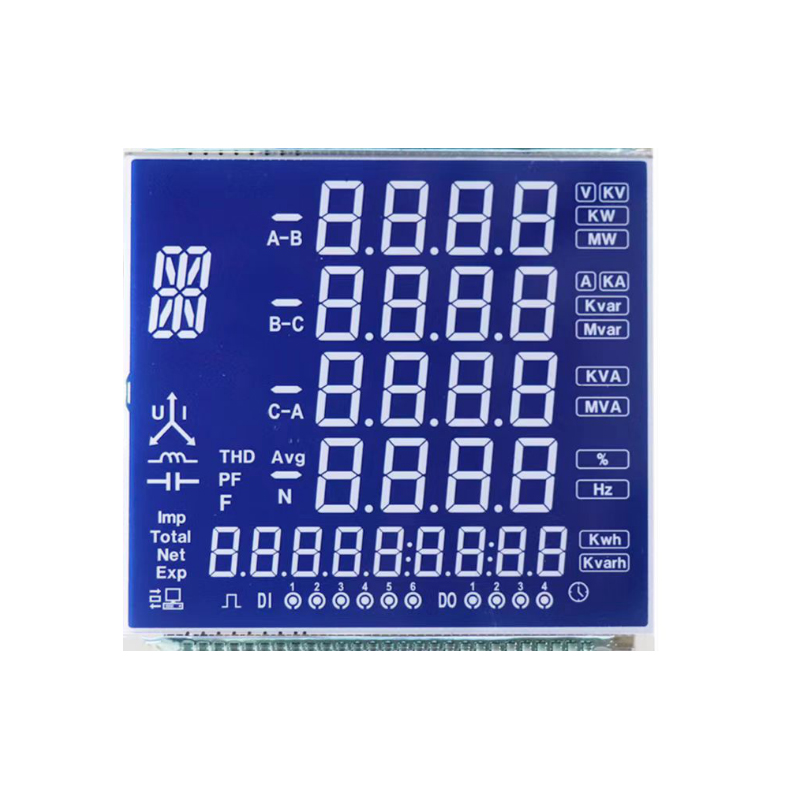
2025-09-01
LED segment displays are not a new concept, but their role in sustainability often gets overlooked. There’s a common misconception that these displays merely serve functional or aesthetic purposes. In the real world, their impact reaches much deeper, influencing energy efficiency and resource use. This article delves into the reality of LED segment displays and their contribution to sustainability, drawing insights from real-world applications and experiences.
Energy efficiency is where LED segment displays truly shine. Unlike traditional displays, they consume significantly less power. It’s not about the immediate energy savings alone; it’s the cumulative effect over time that makes a difference. Companies like Dalian Eastern Display Co., Ltd. have illustrated how integrating LED technology in their LCD screens can lead to substantial cost reductions. By focusing on sustainability, they’ve managed to cut down energy costs across both their Dalian and Dongguan plants.
In practice, switching from older technologies to LEDs in a factory setting can lower monthly electricity bills noticeably. This transformation doesn’t happen overnight, though. Initial resistance to change and required investments often pose challenges. However, the long-term benefits in savings and environmental impact make it an effort worth pursuing.
I’ve seen facilities where this transition has led to a 20-30% decrease in energy usage, highlighting not just potential savings but also a substantial reduction in the facility’s carbon footprint. It’s a gradual process of reorienting priorities towards sustainability.
Durability in LED segment displays significantly contributes to sustainability. These displays typically outlast their traditional counterparts. That means fewer replacements and, consequently, less waste. The impact here is twofold: saving materials used in production and reducing transportation emissions through fewer deliveries.
Unfortunately, some companies overlook the importance of longevity for quick profits. However, those like Dalian Eastern Display Co., Ltd., with their commitment to quality in LCD screens and modules, understand that investing in longevity pays off. Their facilities are equipped with professional production equipment tailored to create durable, customized solutions that align with sustainable practices.
Real experiences in industrial settings reveal that well-maintained LED displays can operate efficiently for over a decade, contrasting sharply with other options that often require replacement every few years. It’s a significant factor for any sustainability-focused strategy.

Moving beyond energy and durability, material efficiency in production is another critical area. Companies that focus on efficient design and resource allocation contribute positively to sustainability. The production of LED segment displays at Dalian Eastern Display Co., Ltd.’s factories showcases this focus by using high-quality materials sparingly and responsibly.
The benefit of this approach is less material waste, which reduces the environmental impact. This is particularly true for companies providing customized solutions where each production run is optimized for material use, resulting in minimal excess.
Recycling and responsible disposal are only part of the solution. It’s about creating products that minimize waste from the start. Several times, I’ve seen attempts to retrofit or recycle displays fall short due to improper initial design choices, underlining the importance of a sustainability-oriented mindset from the beginning.
Technological advancements continue to shape the prospects of LED segment displays in sustainability. Smart integration with IoT and automated control systems represents a promising opportunity for further energy savings and efficiency.
For example, advances in sensor technology enable displays to adjust brightness based on ambient light, further reducing energy use. Companies like Dalian Eastern Display Co., Ltd. can leverage these advancements to offer innovative, sustainable solutions to their clients.
However, as an industry insider, I’ve noticed that the challenge often lies in the integration phase. Bringing together disparate systems seamlessly requires expertise and a forward-thinking approach. It’s not just about the technology but how it fits into a broader sustainable framework.

Despite the apparent benefits, the transition to more sustainable LED segment displays isn’t without hurdles. High initial costs can deter widespread adoption, and there’s often skepticism about the true long-term benefits.
A common pitfall is focusing too heavily on cost-cutting short-term solutions, neglecting the sustainable potential in LED technology. It’s crucial for decision-makers to look at the bigger picture and the enduring advantages that these technologies could bring.
Reflecting on past experiences, those companies that have fully embraced sustainable LED solutions have not only thrived in terms of energy efficiency and cost savings but have also enhanced their brand reputation as eco-friendly and responsible businesses.